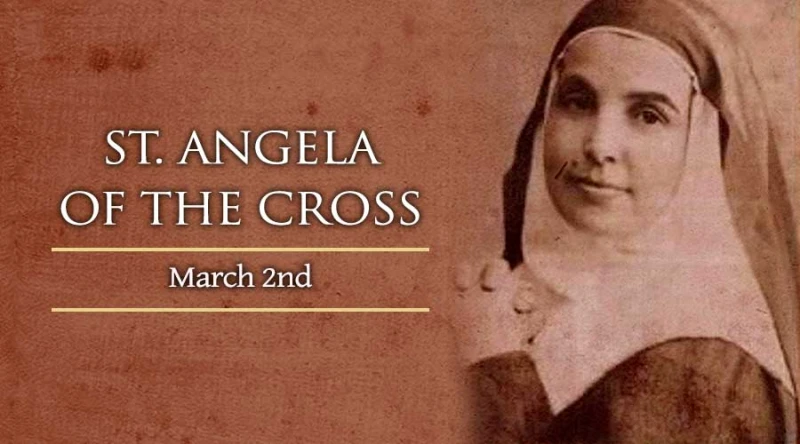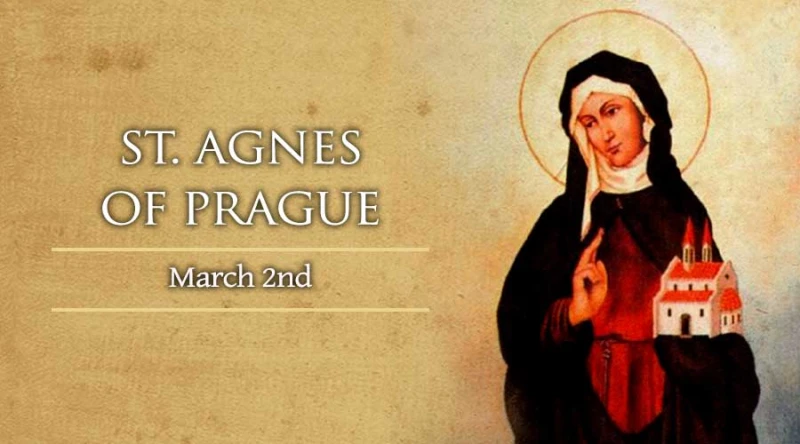 St. Angela of the Cross
St. Angela of the Cross
Feast date: Mar 02
St. Angela of the Cross is the Foundress of the Institute of the Sisters of the Company of the Cross.
Born on January 30, 1846 in Seville, Spain, and given the baptismal name “Maria of the Angels” Guerrero Gonzalez, the future Saint was affectionately known as “Angelita”. Her father worked as a cook in the convent of the Trinitarian Fathers, where her mother also worked doing the laundry. They had 14 children, with only six reaching adulthood.
Angelita was greatly influenced by the teaching and example of her pious parents, and was taught from an early age how to pray the Rosary. She could often be found in the parish church praying before the image of “Our Lady of Good Health”, while her mother prepared a nearby altar. In their own home, a simple altar was erected in honour of the Virgin Mary during the month of May, where the family would recite the Rosary and give special honour to Our Lady.
Angelita made her First Communion when she was eight, and her Confirmation when she was nine. She had little formal education, and began work as a young girl in a shoeshop. Her employer and teacher of shoe repair, Antonia Maldonado, was a holy woman; every day the employees prayed the Rosary together and read the lives of the Saints. Canon José Torres Padilla of Seville was Antonia’s spiritual director, and had a reputation of “forming saints”. Angelita was 16 years old when she met Fr. Torres and was put under his direction.
Angelita’s desire to enter religious life was growing, and when she was 19, she asked to enter the Discalced Carmelites in Santa Cruz but was refused admission because of her poor health. Instead, following the advice of Fr Torres, she began caring for destitute cholera patients, because a cholera epidemic was quickly spreading among the poor.
In 1868 Angelita tried once again to enter the convent, this time the Daughters of Charity of Seville. Although her health was still frail, she was admitted. The sisters tried to improve her health and sent her to Cuenca and Valencia, but to no avail. She left the Daughters of Charity during the novitiate and returned home to continue working in the shoeshop.
Fr Torres believed that God had a plan for Angelita, but this plan was still a mystery. On 1 November 1871, at the foot of the Cross, she made a private vow to live the evangelical counsels, and in 1873 she received the call from God that would mark the beginning of her “new mission”. During prayer, Angelita saw an empty cross standing directly in front of the one upon which Jesus was hanging. She understood immediately that God was asking her to hang from the empty cross, to be “poor with the poor in order to bring them to Christ”.
Angelita continued to work in the shoeshop, but under obedience to Fr Torres she dedicated her free time to writing a detailed spiritual diary that revealed the style and ideal of life she was being called to live. On 2 August 1875 three other women joined Angelita, beginning community life together in a room they rented in Seville. From that day on, they began their visits and gave assistance to the poor, day and night.
These Sisters of the Company of the Cross, under the guidance of Angelita, named “Mother Angela of the Cross”, lived an authentically recluse contemplative life when they were not among the poor. Once they returned to their home, they dedicated themselves to prayer and silence, but were always ready when needed to go out and serve the poor and dying. Mother Angela saw the sisters as “angels”, called to help and love the poor and sick in their homes who otherwise would have been abandoned.
In 1877 a second community was founded in Utrera, in the province of Seville, and a year later one in Ayamonte. Fr Torres died that same year, and Fr José María Alvarez was appointed as the second director of the Institute.
While Mother Angela was alive, another 23 convents were established, with the sisters edifying everyone they served by their example of charity, poverty and humility. In fact, Mother Angela herself was known by all as “Mother of the Poor”.
Mother Angela of the Cross died on 2 March 1932 in Seville. She was beatified by Pope John Paul II on 5 November 1982.
With her characteristic humility, she once wrote these words: “The nothing keeps silent, the nothing does not want to be, the nothing suffers all…. The nothing does not impose itself, the nothing does not command with authority, and finally, the nothing in the creature is practical humility”.



